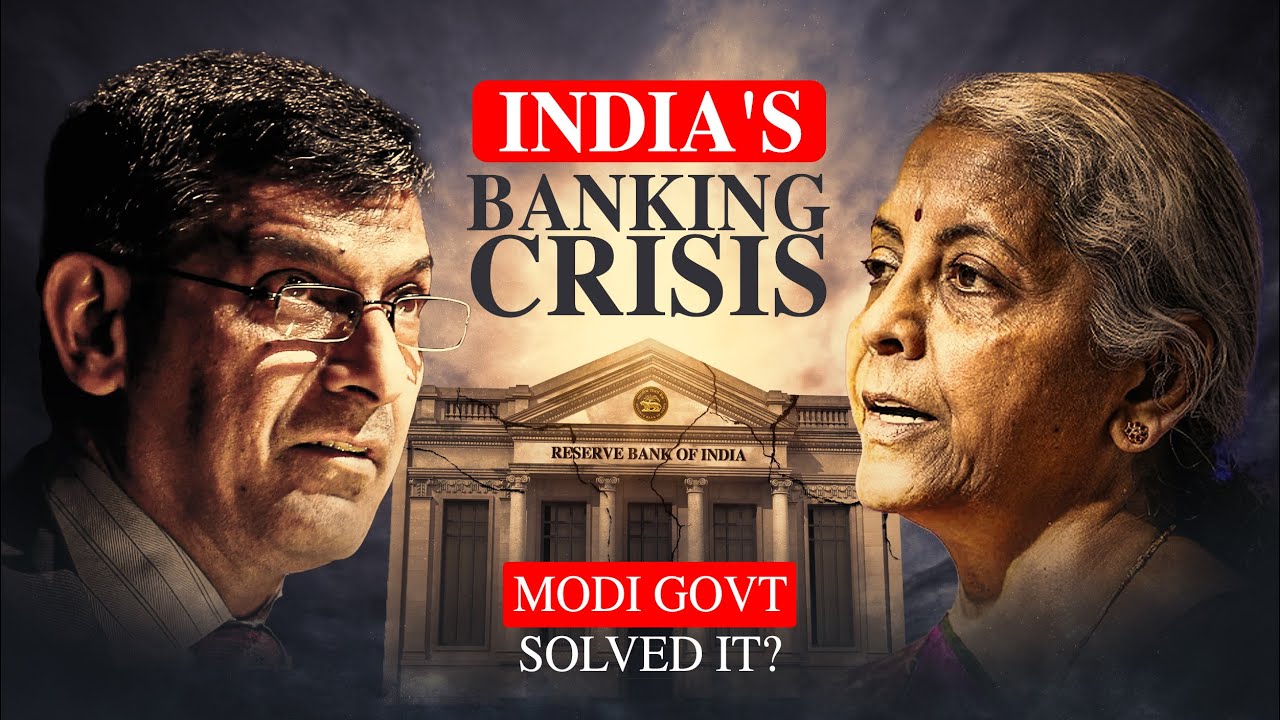SECRET METHOD Banks Use To Control The World
Summary
TLDRThis video script delves into the intricate world of banking, revealing how banks can seemingly print money and control global assets. It outlines a three-step process: banks create money through loans, engage in a shadow banking system to transfer assets globally, and face constraints due to risk and interest rates. The script challenges viewers to consider risk analysis over central bank actions when making investment decisions, emphasizing the importance of understanding the banking system's impact on wealth-building.
Takeaways
- 💡 Banks have the ability to create money through the process of lending, which initially did not exist before the loan was created.
- 🏦 The balance sheet of a bank is crucial, with assets like loans on one side and liabilities like deposits on the other.
- 🔄 When a loan is paid to another bank, the transferring bank must either offset the liability with an asset or transfer reserves to maintain balance.
- 🌐 The concept of 'shadow banking' refers to banking activities conducted outside the regulatory oversight of central banks like the Federal Reserve.
- 🌿 Shadow banks can operate without the need for traditional bank reserves, potentially allowing for unlimited money creation.
- 💸 Banks can create their own reserves and money, but they are constrained by the risk associated with the assets they purchase with the created money.
- 📉 Market risks, such as changes in interest rates, can significantly affect the value of assets, potentially leading to bank insolvency.
- 🚫 The video emphasizes that despite the ability to create money, banks are ultimately limited by the perceived risk and creditworthiness of their assets and counterparties.
- 💼 For investors, understanding the dynamics of risk and the global monetary system is more important than just focusing on central bank actions like quantitative easing or tightening.
- 🌟 The video suggests that risk analysis should be the starting point for investors trying to navigate financial markets influenced by central banks and large financial institutions.
Q & A
What is the main claim about banks' ability to control the world as presented in the script?
-The main claim is that banks have the ability to create money and manipulate the financial system, particularly through the process of lending and the creation of deposits, which can be used to buy assets and influence the global economy.
How does the script explain the process of money creation by banks?
-The script explains that when a bank creates a loan, it effectively creates new money by adding a new deposit to its balance sheet, offset by the loan as an asset. This process is illustrated through the example of Joe borrowing money to buy a car from Moody.
What is the role of the Federal Reserve in the process described in the script?
-The Federal Reserve plays a central role by acting as the clearinghouse for interbank transactions. It facilitates the transfer of reserves between banks to balance their balance sheets when deposits are transferred between different banks.
What is the significance of the term 'shadow banking system' mentioned in the script?
-The 'shadow banking system' refers to banking activities conducted outside the traditional banking system, which are not subject to the same regulations. This system allows banks to create money and reserves without the direct oversight of central banks like the Federal Reserve.
How does the script describe the process of transferring money between banks, particularly internationally?
-The script describes the process of transferring money internationally by showing how banks credit each other's accounts and use reserves to offset liabilities. This is illustrated with the example of Exxon transferring money from Chase New York to City Bank in London.
What is the concept of 'ledger money' as mentioned in the script?
-The concept of 'ledger money' refers to the credit entries made by banks on their balance sheets to balance transactions. It's a form of money that exists as a record of debt within the banking system, rather than physical currency.
Why doesn't the script suggest that banks would actually buy everything in the world despite their ability to create money?
-The script suggests that while banks can create money and credit, they are constrained by risk, particularly the risk associated with the assets they purchase. If the value of these assets plummets, banks can become insolvent, which limits their ability to buy everything.
What is the role of risk in the banking system as discussed in the script?
-Risk plays a critical role in the banking system by constraining banks' ability to create money and buy assets. The script emphasizes that banks must manage credit risk, interest rate risk, and counterparty risk, which can affect their solvency and the stability of the financial system.
How does the script relate the concept of risk to the actions of central banks like the Federal Reserve?
-The script argues that while central banks' actions, such as quantitative easing or tightening, can influence liquidity, the perception of risk in the global monetary system is a more significant factor. It suggests that investors should focus on understanding risk levels rather than solely on central bank policies.
What is the practical implication of the script's discussion on banking and money creation for individual investors?
-The practical implication for individual investors is to focus on understanding the risks in the financial system, which can affect asset prices and the value of investments. The script suggests that being aware of these risks can help investors make more informed decisions about where to allocate their capital.
Outlines

このセクションは有料ユーザー限定です。 アクセスするには、アップグレードをお願いします。
今すぐアップグレードMindmap

このセクションは有料ユーザー限定です。 アクセスするには、アップグレードをお願いします。
今すぐアップグレードKeywords

このセクションは有料ユーザー限定です。 アクセスするには、アップグレードをお願いします。
今すぐアップグレードHighlights

このセクションは有料ユーザー限定です。 アクセスするには、アップグレードをお願いします。
今すぐアップグレードTranscripts

このセクションは有料ユーザー限定です。 アクセスするには、アップグレードをお願いします。
今すぐアップグレード5.0 / 5 (0 votes)






